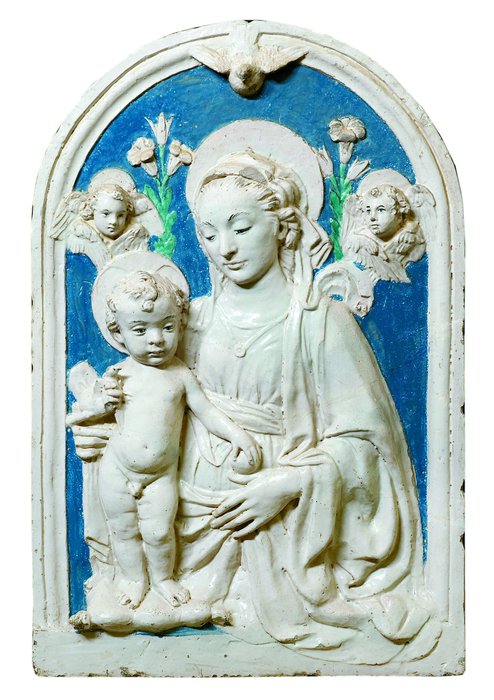Information about the artwork
- Artist/maker
- Benedetto Buglioni
- Title
- Madonna and Child
- Date
- 1500
- Materials and Techniques
- 35
- Dimensions
83 x 55 cm
- Location
-
Palazzo Pretorio Museum
First Floor
Our site saves small pieces of text information (cookies) on your device in order to deliver better content and for statistical purposes. You can disable the usage of cookies by changing the settings of your browser. By browsing our website without changing the browser settings you grant us permission to store that information on your device. I agree
83 x 55 cm

This lovely ancon is displayed in the room dedicated to Donatello and Renaissance sculpture in Prato. Its figures, described with soft, vibrant lines, derive from an early 1470s Verrocchio relief (perhaps the terracotta work in the Birmingham Museum and Art Gallery). It is a work by the Florentine artist Benedetto Buglioni, the pupil and then competitor, above all outside Florence, of Andrea della Robbia. Buglioni took inspiration from the important masters of the time, creating works of considerably high quality, as well as a more serial type of production.
Benedetto Buglioni probably trained with Andrea della Robbia and opened his own workshop in Florence about 1480 in competition with his master. He was particularly successful with the reproduction of glazed terracotta objects of home devotion, using models taken with few changes from the main sculptors of the time: Rossellino, Benedetto da Maiano, and above all Verrocchio. Together with a more serial production, Buglioni also created important works characterised by a greater pictorialism than his contemporary Giovanni della Robbia, above all for non-Florentine clients in Perugia, Bolsena, Fiesole and Pistoia. As in many of his other works, Buglioni added behind the Virgin Mary two lily branches, her typical attribute, as well as two lively cherubs and the dove of the Holy Ghost. The Madonna’s robes show a soft, loose plasticism, and the veil fixed to her hair billows out behind her shoulder. The curly-haired, lively child, shown naked and standing on a cushion, holds in one hand a bird, in the other the globe.